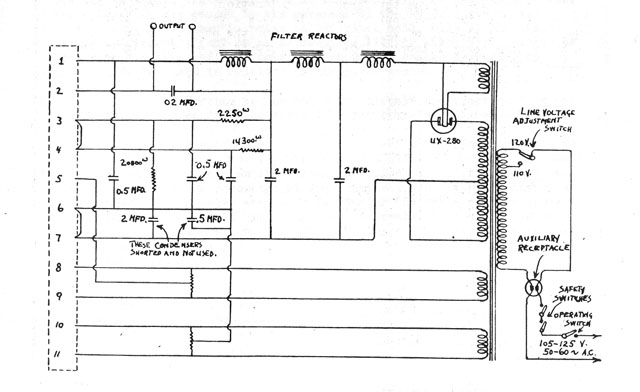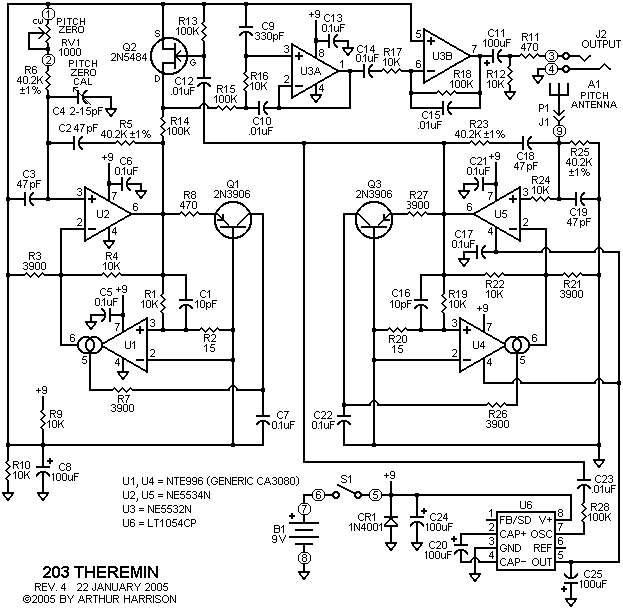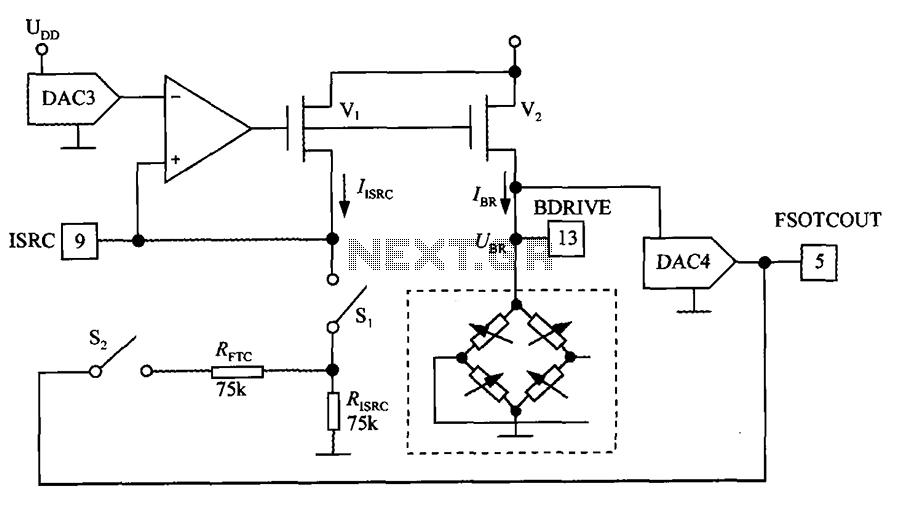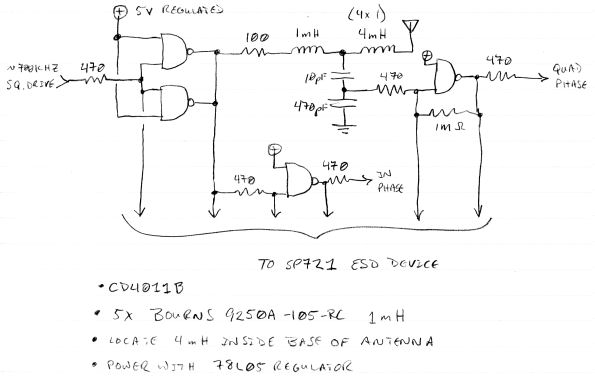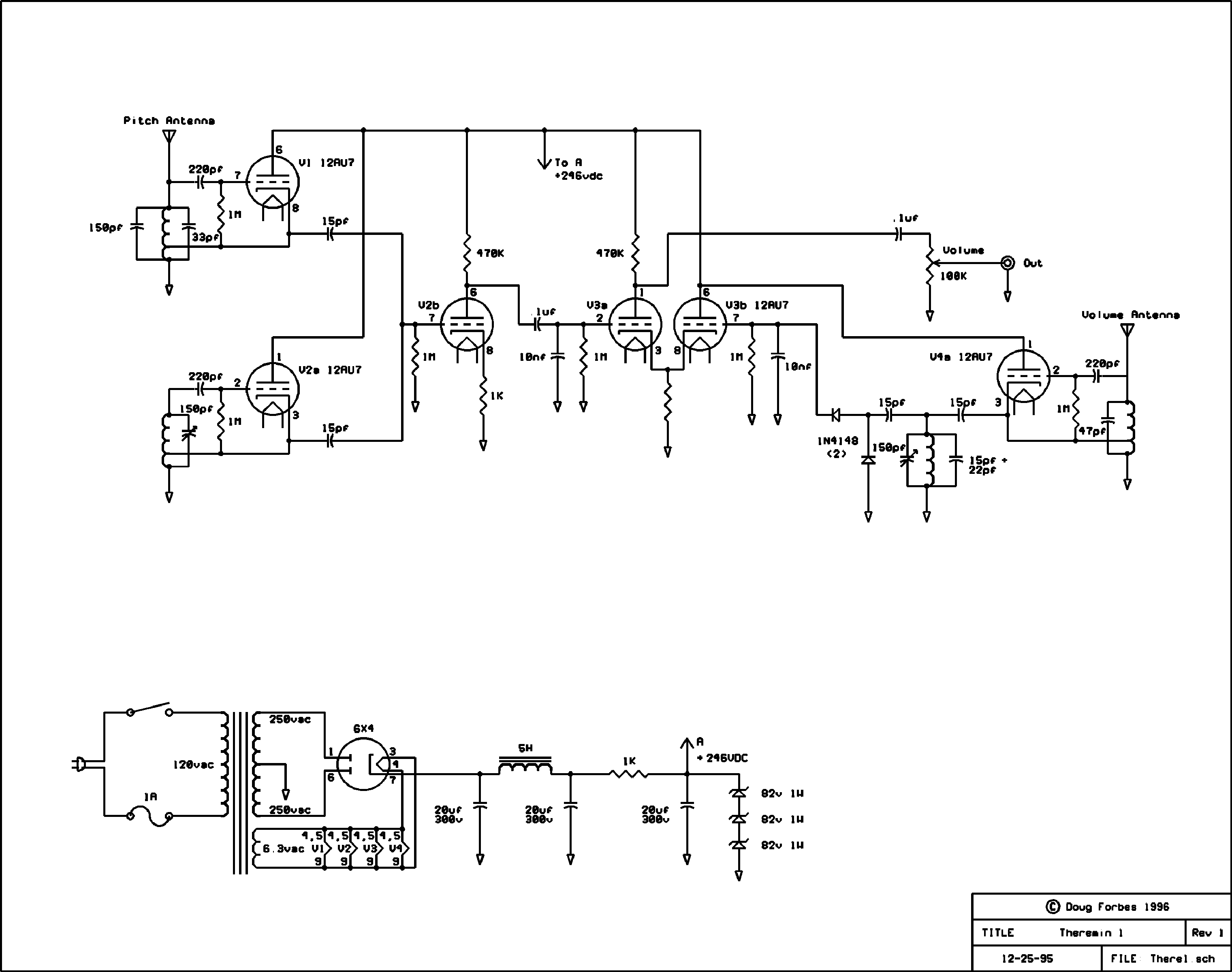
The 145 Theremin
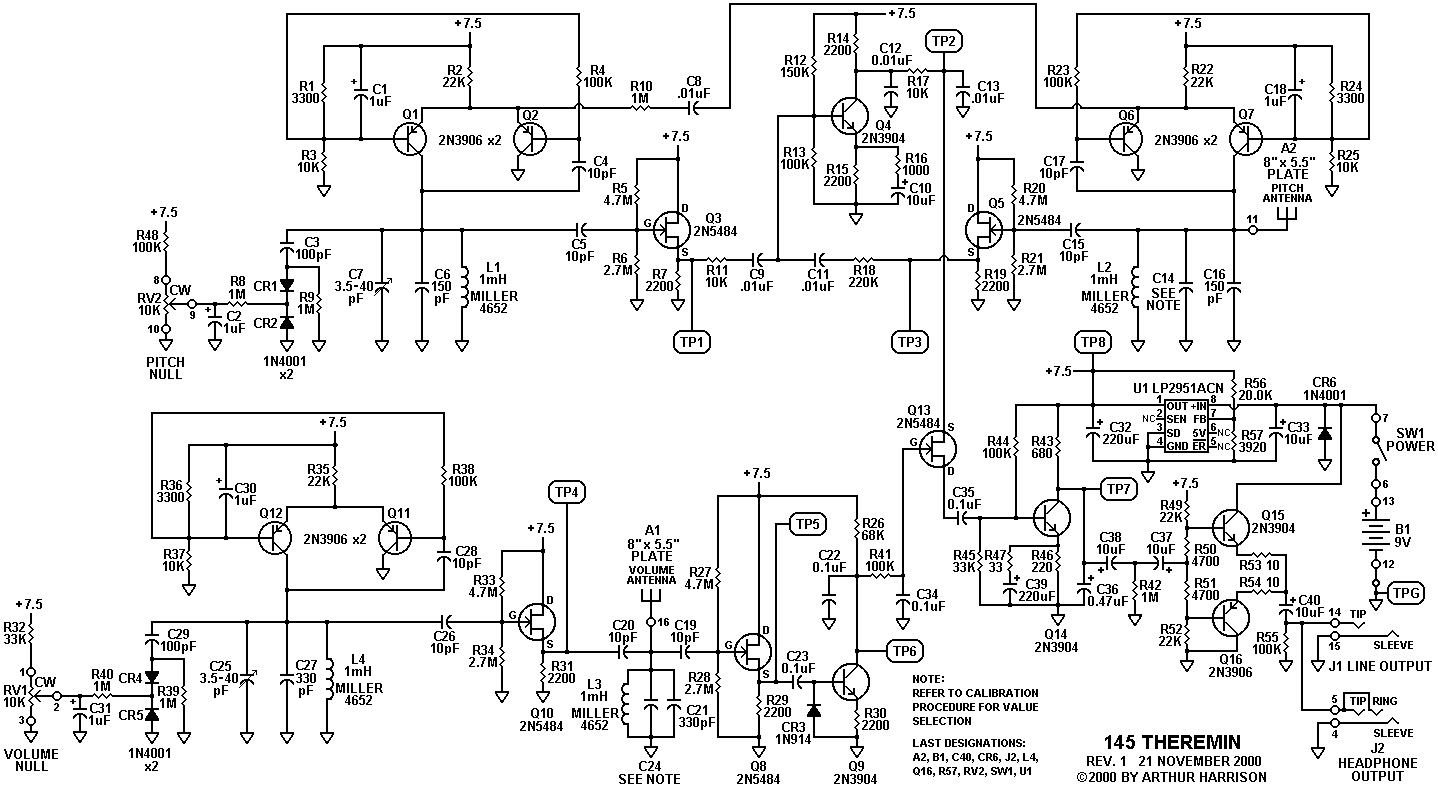
Since the publication of the type 144 theremin project article in September 1998, many of these instruments have been successfully constructed. The 145 theremin retains a heterodyne topology similar to that used in the original instruments by Mr. Theremin, as seen in the 144 and its predecessor, the Southwest Technical Products model 142. The 145 theremin is similar to the 144 in most respects, except for the types of oscillators used. The oscillators in the 145 theremin are differential-pair types, while the 144 utilizes Colpitts types. The approximate operating frequencies for the 145 theremin are 270 kHz for the volume circuit and 360 kHz for the pitch circuit. Compared to the 144, the 145 exhibits improved pitch-arc linearity, with A440 occurring at about 10 inches of hand distance, compared to approximately 5 inches for the 144. The practical pitch range for the 145 is about 4.5 octaves. Inexpensive silicon rectifiers are employed as varactors, providing a volume oscillator tuning range of about 1200 Hz and a pitch reference oscillator tuning range of approximately 700 Hz. These frequencies typically vary within ±10 percent among instruments due to tolerances. In the new design, oscillator outputs are taken from the resonant L-C pairs, producing low-distortion sine waves. Weak coupling is established between the two pitch oscillators via C8 and R10 to induce a "lock" condition for zero-beat when the pitch hand is absent. The pitch oscillator levels at the mixer input are unequal, resulting in a significantly reduced mixer output amplitude compared to the 144.
The 145 theremin represents an evolution in theremin design, incorporating differential-pair oscillators that enhance both performance and sound quality. The choice of operating frequencies at 270 kHz for volume modulation and 360 kHz for pitch modulation ensures that the instrument maintains a wide dynamic range while allowing for precise control over pitch and volume. The improved pitch-arc linearity is a significant advancement, making the instrument more intuitive for performers, as they can achieve desired pitch changes with less hand movement.
The use of silicon rectifiers as varactors is a cost-effective solution that contributes to the overall tuning flexibility of the theremin. With a tuning range of 1200 Hz for volume and 700 Hz for pitch, musicians can explore a wide array of tonal possibilities. The ±10 percent frequency variation among different units indicates the importance of careful calibration and quality control during manufacturing.
In terms of signal processing, the output derived from the resonant L-C pairs is crucial for producing low-distortion sine waves, which are essential for maintaining the purity of the theremin's sound. The weak coupling mechanism implemented through components C8 and R10 ensures that the pitch oscillators can achieve a stable zero-beat condition, which is vital for maintaining pitch accuracy when the performer’s hands are not in proximity to the instrument.
The design also addresses the mixer input levels, which are intentionally unequal to reduce the output amplitude. This strategic approach minimizes potential distortion and enhances the overall tonal quality of the theremin, setting it apart from previous models like the 144. Overall, the 145 theremin showcases advancements in electronic design and engineering, resulting in a more refined and versatile instrument for musicians.Since the publication of the type 144 theremin project article in September, 1998, many of them have been successfully constructed. As in the 144, and its forerunner, the Southwest Technical Products model 142, the 145 theremin retains a heterodyne topology similar to that used by Mr.
Theremin in his original instruments. The 145 theremin is similar to the 144 in most respects, excepting the types of oscillators used. The 145 theremin oscillators are differential-pair types, in comparison to the Colpitts types in the 144. The approximate operating frequencies for the 145 theremin are 270kHz for the volume circuit and 360kHz for the pitch circuit.
Compared to the 144, the 145 has improved pitch-arc linearity, with A440 occurring at about 10 inches of hand distance, compared to about 5 inches for the 144. The practical pitch range for the 145 is about 4 1/2 octaves. Inexpensive silicon rectifiers are used as varactors to provide a volume oscillator tuning range of about 1200Hz and a pitch reference oscillator tuning range of about 700Hz.
These frequencies will typically vary within ±10 per-cent among instruments, due to tolerances. In the new design, oscillator outputs are taken from the resonant L-C pairs, and are low-distortion sine waves. Weak coupling is provided between the two pitch oscillators via C8 and R10 to induce a "lock" condition for zero-beat when the pitch hand is absent.
The pitch oscillator levels at the mixer input are unequal, and the mixer output amplitude is significantly reduced in comparison to the 144. This reduct 🔗 External reference
The 145 theremin represents an evolution in theremin design, incorporating differential-pair oscillators that enhance both performance and sound quality. The choice of operating frequencies at 270 kHz for volume modulation and 360 kHz for pitch modulation ensures that the instrument maintains a wide dynamic range while allowing for precise control over pitch and volume. The improved pitch-arc linearity is a significant advancement, making the instrument more intuitive for performers, as they can achieve desired pitch changes with less hand movement.
The use of silicon rectifiers as varactors is a cost-effective solution that contributes to the overall tuning flexibility of the theremin. With a tuning range of 1200 Hz for volume and 700 Hz for pitch, musicians can explore a wide array of tonal possibilities. The ±10 percent frequency variation among different units indicates the importance of careful calibration and quality control during manufacturing.
In terms of signal processing, the output derived from the resonant L-C pairs is crucial for producing low-distortion sine waves, which are essential for maintaining the purity of the theremin's sound. The weak coupling mechanism implemented through components C8 and R10 ensures that the pitch oscillators can achieve a stable zero-beat condition, which is vital for maintaining pitch accuracy when the performer’s hands are not in proximity to the instrument.
The design also addresses the mixer input levels, which are intentionally unequal to reduce the output amplitude. This strategic approach minimizes potential distortion and enhances the overall tonal quality of the theremin, setting it apart from previous models like the 144. Overall, the 145 theremin showcases advancements in electronic design and engineering, resulting in a more refined and versatile instrument for musicians.Since the publication of the type 144 theremin project article in September, 1998, many of them have been successfully constructed. As in the 144, and its forerunner, the Southwest Technical Products model 142, the 145 theremin retains a heterodyne topology similar to that used by Mr.
Theremin in his original instruments. The 145 theremin is similar to the 144 in most respects, excepting the types of oscillators used. The 145 theremin oscillators are differential-pair types, in comparison to the Colpitts types in the 144. The approximate operating frequencies for the 145 theremin are 270kHz for the volume circuit and 360kHz for the pitch circuit.
Compared to the 144, the 145 has improved pitch-arc linearity, with A440 occurring at about 10 inches of hand distance, compared to about 5 inches for the 144. The practical pitch range for the 145 is about 4 1/2 octaves. Inexpensive silicon rectifiers are used as varactors to provide a volume oscillator tuning range of about 1200Hz and a pitch reference oscillator tuning range of about 700Hz.
These frequencies will typically vary within ±10 per-cent among instruments, due to tolerances. In the new design, oscillator outputs are taken from the resonant L-C pairs, and are low-distortion sine waves. Weak coupling is provided between the two pitch oscillators via C8 and R10 to induce a "lock" condition for zero-beat when the pitch hand is absent.
The pitch oscillator levels at the mixer input are unequal, and the mixer output amplitude is significantly reduced in comparison to the 144. This reduct 🔗 External reference
